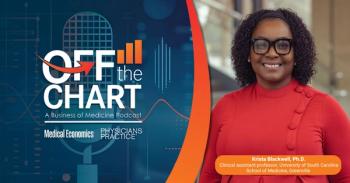
Primary care is good for more than the heart
How an independent physician managed to lower his patients’ risk of stroke, heart disease, and other life-threatening conditions.
High blood pressure is nothing to shrug off. In my nearly 40 years in independent primary care, I’ve seen the condition destroy lives by way of heart attack, stroke, and kidney failure. But high blood pressure isn’t a death sentence. Just ask the countless patients who’ve controlled the “silent killer.”
Their progress is in no small part thanks to education and evidence-based medicine, which the American Heart Association (AHA) argues are key to managing blood pressure. Even so, nearly half of all U.S. adults
The problem lies in a failure to be proactive.
By doing our best to keep patients healthy and committing to sound data and reliable reporting, primary care physicians can better diagnose hypertension and help patients keep the gravest risks at bay. But to sweep through medicine, this kind of change requires intent.
I know this from experience. Back in 2019, I joined an initiative called
That outpaced the national average by 45 percentage points, but the number only tells part of the story.
Target: BP’s rewards extended beyond the Big Island. During the same time period, 46% of all participants achieved Gold Status, and 57% improved blood pressure control rates over the prior year.
Not long ago, I reviewed this data and asked myself a question: Why did we succeed in helping our patients cut the risk of stroke, heart disease, and other life-or-death conditions?
Target: BP, with its vast knowledge and important resources, certainly played a critical role. But I concluded that the very nature of primary care—and primary care done well—was the real champion here.
I make sure to carve out at least 30 minutes for each patient on my Elation Health system. I even do the occasional house call. That’s the thing about independent primary care: Physicians have the opportunity to spend serious time with patients, and that opens the door to serious results.
It’s no charity, though. Independent primary care physicians may charge Medicare up to $217,204 per year,
All the while, large physician groups
This good news doesn’t always get out. Thanks to poor data reporting, 16 percent of clinicians in small provider settings suffered
, compared to just 2 percent of all clinicians, regardless of group size. So while independent primary care physicians know how to do their jobs, we don’t always know how to show it.
There’s no way any single primary care physician can eradicate the risks wrought by high blood pressure and other widely prevalent conditions. But as Target: BP shows, we all have what it takes to make a difference in our communities.
About the Author
Roger Kimura, M.D., is an independent primary care physician based in Honolulu, Hawai’i. Now in his 37th year in medicine, he still makes the occasional house call.
Newsletter
Optimize your practice with the Physicians Practice newsletter, offering management pearls, leadership tips, and business strategies tailored for practice administrators and physicians of any specialty.










